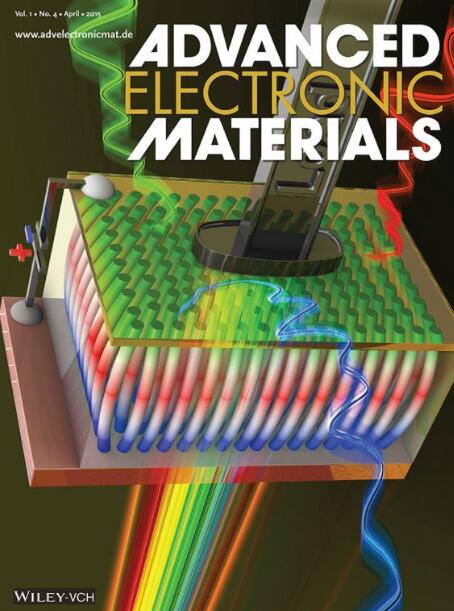Solution‐Processed Bi2S3 Nanostructures for Flexible Memory and Neuromorphic Computing
IF 5.3
2区 材料科学
Q2 MATERIALS SCIENCE, MULTIDISCIPLINARY
引用次数: 0
Abstract
The rapid advancement of wearable computing and edge AI technologies is driving the need for low‐temperature, flexible, and neuromorphic‐compatible electronic materials. In this work, the successful low‐temperature deposition of Bi溶液处理的Bi2S3纳米结构用于灵活记忆和神经形态计算
可穿戴计算和边缘人工智能技术的快速发展推动了对低温、柔性和神经形态兼容电子材料的需求。在这项工作中,报告了使用单源前驱体(SSP) [Bi(S2P(OC3H₇)2)3]通过原位溶剂热法成功地低温沉积Bi2S3薄膜。这种溶液处理方法能够在宽温度窗(140-200°C)内形成高质量,结晶和化学计量的Bi2S3薄膜,与包括硅,聚酰亚胺和PET在内的一系列衬底兼容。利用这种沉积技术,可以在刚性和柔性衬底上制造基于Bi2S3的忆阻器。该器件表现出稳定的电阻开关行为,并在应力条件下表现出机械和电气稳健性。此外,记忆电阻器有效地模拟了长期突触可塑性,实现了较高的学习精度。这些发现确立了SSP衍生的Bi2S3薄膜作为下一代柔性神经形态计算和存储技术的有前途的材料平台。
本文章由计算机程序翻译,如有差异,请以英文原文为准。
求助全文
约1分钟内获得全文
求助全文
来源期刊

Advanced Electronic Materials
NANOSCIENCE & NANOTECHNOLOGYMATERIALS SCIE-MATERIALS SCIENCE, MULTIDISCIPLINARY
CiteScore
11.00
自引率
3.20%
发文量
433
期刊介绍:
Advanced Electronic Materials is an interdisciplinary forum for peer-reviewed, high-quality, high-impact research in the fields of materials science, physics, and engineering of electronic and magnetic materials. It includes research on physics and physical properties of electronic and magnetic materials, spintronics, electronics, device physics and engineering, micro- and nano-electromechanical systems, and organic electronics, in addition to fundamental research.
 求助内容:
求助内容: 应助结果提醒方式:
应助结果提醒方式:


